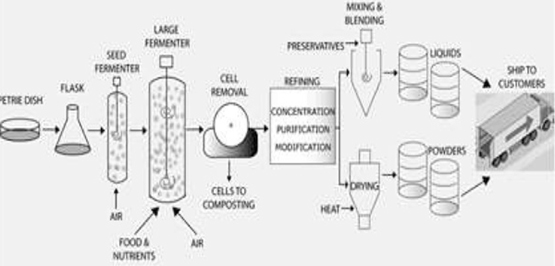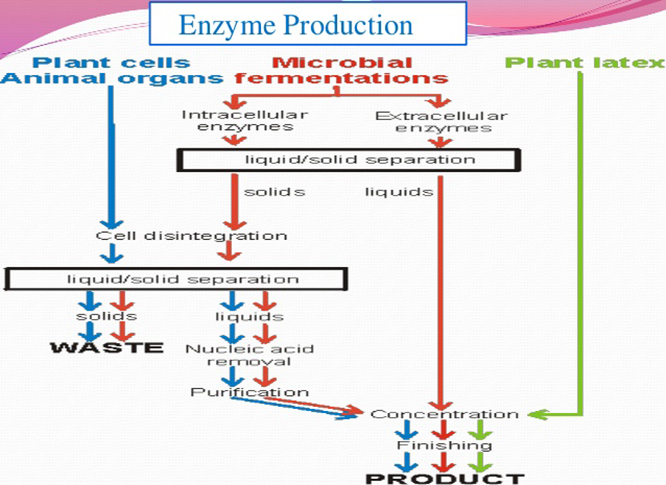Enzyme Production
The fact that enzymes are molecules that take apart other molecules, can be used to maximize yields and growth.
Growing in the healthiest, most fertile outdoor soil, a plant's roots is surrounded by billions of beneficial microbes that manufacture enzymes.
These enzymes are constantly breaking down dead roots, other organic matter, and unused nutrients, so as to transform them into materials that plants use for fuel to maximize its yields and growth.
As long as the most appropriate enzymes are used in their root zone, outdoor plants will get huge and very productive.
The most exceptionally useful enzymes are chitinases, proteases, hydrolases, glucanases and cellulases. They turn debris into pre-digested food for plants.
To create the most vigorous enzymatic environment your roots need, live, thriving, concentrated amounts of these enzymes need to be inserted into their root zone.

Key to enzymology is how to pick the perfect enzymes and mix them into a formula that works best in a particular root zone:
First, outsourcing product manufacturing is OUT! One needs to fully control one's formulas and processes!
To guarantee an effective enzyme formula, you have to get enzymes that have been especially extracted in accredited bio-engineering laboratories.
Their scientists grow and ferment huge amounts of beneficial soil microbes, so as to get concentrated doses of enzymes.
Then, these enzymes are tested individually and together, so as to ensure a maximum shelf life, viability and effectiveness in the root zone.
Scientists noticed sometimes that a certain enzyme did not work so well with other enzymes, or that a particular enzyme cannot be kept active in the liquid solution.
Through continual testing, they arrive at the optimum pH, temperature, and viscosity. This ensures the best preservation of the bio-activity of enzymes for long periods of time.
There is a circular cycle of enzymes breaking down dead organic material into sugars, then beneficial microbes eating these sugars, thus creating more enzymes.
Introducing long-chain humic acid into your root zone is like building a “condo complex” for beneficial microbes, giving them an optimal structure to flourish in.
Short-chain fulvic acid is a poorly understood molecule that directly stimulates plant growth. It is over 1,000 x smaller than humic acid, and most minerals like sodium bicarbonate, thus easier for transportation and its absorption by plants.

Enzymes for Plant & Root Health
Since enzymes are specific in the reactions they catalyze, a diverse variety of enzymes must be present in the root zone to carry out all the different biochemical transformations required to break down the various components of the decaying plant material.
Only when the right type of enzyme finds the right substrate, does the right biochemical reaction occur, with no undesirable side-effects. When cellulase breaks down cellulose, no other material or process will be altered or affected.
Hygrozyme contains an industry leading concentration of 4 core enzymes: 1,000 U/mL Cellulase, 100 U/mL Xylanase, 75 U/mL Hemicellulase and 40 U/mL beta-Glucanase, which are also complemented by a unique blend of additional hydrolytic enzymes to assist in the effective breakdown of dead root matter.
Products should be produced in an ISO 9001:2008 certified facility:
